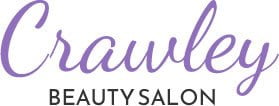Mastering Cheek Botox: A Comprehensive Guide

Botox has transcended its initial use as a wrinkle smoother to become a key player in the cosmetic field for facial sculpting, particularly in cheek contouring. This detailed guide explores the innovative application of Botox for enhancing and refining cheek aesthetics, offering a non-invasive route to achieving beautifully sculpted cheeks.
The Role of Botox in Cheek Contouring
Botox, a purified form of botulinum toxin, is adept at temporarily relaxing muscles to smooth out wrinkles. Its application in cheek contouring leverages a strategic approach to soften the appearance of the masseter muscle and subtly lift and define the cheek area, contributing to a more balanced and youthful facial profile.
How Cheek Botox Works
For cheek contouring, Botox is meticulously injected into specific areas to achieve a desired sculpting effect. It can be used to target the muscles that pull the cheeks downward, thereby allowing the upper face muscles to lift the cheeks subtly. This results in a more defined cheekbone area without the invasiveness of surgical procedures.
Advantages of Cheek Botox for Facial Sculpting
- Minimally Invasive: Offers a non-surgical alternative for those seeking to enhance their cheek aesthetics without downtime.
- Tailored Treatments: Customizable to fit each individual's unique facial structure and aesthetic goals, ensuring results that look natural.
- Quick and Convenient: The procedure is efficient, with no required recovery time, making it ideal for busy lifestyles.
- Versatile: Besides aesthetic improvements, Botox can alleviate discomfort from teeth grinding and TMJ disorders by targeting the masseter muscle.
Who Benefits from Cheek Botox?
Cheek Botox is ideal for individuals looking to enhance their facial contours without undergoing surgery. It's particularly effective for those wishing to achieve a more pronounced cheekbone structure or to balance facial proportions subtly.
The Cheek Botox Procedure: What to Anticipate
- Initial Consultation: An evaluation with a skilled practitioner to discuss the procedure, desired outcomes, and any potential risks.
- The Treatment: Strategic administration of Botox injections into predetermined areas to refine cheek contours.
- Procedure Time: Typically swift, the entire process can be completed in a brief office visit.
- Post-Treatment Care: Requires minimal downtime, with specific aftercare instructions provided to ensure the best results.


Results and Ongoing Care
The effects of cheek Botox are visible within a few weeks post-treatment, peaking around one month. The refined cheek contours can be maintained for 4 to 6 months, after which follow-up treatments are recommended for prolonged results.
Selecting a Qualified Practitioner
Achieving the best results depends significantly on the expertise of the practitioner. It's crucial to choose a professional with a strong track record in cosmetic Botox treatments, particularly those experienced in facial contouring techniques.
It emerges as an effective, safe, and non-surgical solution for individuals seeking to enhance their cheek contours and achieve a harmonious facial balance. This guide underscores the importance of understanding the procedure, its benefits, and the significance of consulting with experienced practitioners, enabling you to make informed decisions about pursuing cheek contouring with Botox.
FAQ
Q. What is Cheek Botox?
Cheek Botox involves the strategic use of botulinum toxin injections to contour and enhance the cheek area. This non-surgical treatment can subtly lift and define the cheeks for a more youthful and balanced facial appearance.
Q. How does it work?
Botox works by temporarily relaxing specific facial muscles, reducing their pull on the skin and allowing for a subtle lift and contour of the cheeks. This can lead to a more defined cheekbone area and a softer, more youthful facial profile.
Q. Who is the ideal candidate?
Ideal candidates are individuals looking for a non-invasive way to enhance the contours of their cheeks, improve facial balance, or achieve a subtle lift without the need for surgery. It's suitable for those in good general health and with realistic expectations about the outcomes of the treatment.
Q. Is the procedure painful?
Most individuals experience minimal discomfort during the injections. A fine needle is used, and the treatment is quick, often described as a series of small pinches. Topical numbing cream can be applied beforehand to reduce any discomfort.
Q. What can I expect during the recovery period?
There is minimal to no downtime required after treatment. Most patients can return to their normal activities immediately after the procedure. Some might experience minor bruising or swelling at the injection sites, but this typically subsides quickly.
Q. How long do the results of last?
The effects can last anywhere from 4 to 6 months, depending on individual factors such as the patient's metabolism, lifestyle, and the amount of product used. Periodic touch-up treatments are recommended to maintain the desired contour and volume.
Q. Can it be reversed?
Botox results are not permanent and will naturally diminish over time. If you're unsatisfied with the appearance, its effects will gradually decrease, usually over a few months, until your muscle activity returns to normal.
Q. Are there any side effects associated with it?
Side effects are generally mild and temporary. They may include bruising, swelling, redness, or discomfort at the injection sites. Serious side effects are rare when the procedure is performed by a qualified practitioner.
Q. How do I choose a practitioner?
Choosing an experienced and qualified practitioner is crucial for achieving the best results and minimizing risks. Look for a licensed medical professional with specialized training in cosmetic Botox treatments and a portfolio of before-and-after photos of their work.
Q. How should I prepare for a treatment?
Avoid blood-thinning medications and supplements, such as aspirin, ibuprofen, and fish oil, for a week before treatment to reduce the risk of bruising. Discuss any medications or health conditions with your practitioner during the consultation to ensure it is safe for you.
